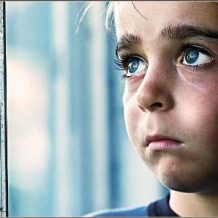Yeast in Children

When babies are born they already have a functioning immune system which they inherited from their mothers. Although this preliminary immunity fades as the infant matures, it is reinforced either from the breast milk it receives from mom or from the nutrients in baby formula. Over time this initial immunity to childhood ailments fades. If the child’s immune system is strong there will be few problems when this happens. Even so, the infant may be prone to yeast infections in the form of diaper rash. Even infants who get the best of care can develop diaper rash. Candida, the most common yeast infection, loves dark, warm and moist locations on the human body. Wet diapers on babies and wet cloths on toddlers who are still having mishaps are the perfect welcome mat for yeast infection in children.
Girls are especially prone to yeast infections in the vaginal area while boys may get jock itch in the creases of their groin area. Regardless of where it starts, any such yeast on children that infects the skin, the mouth, the rectum or vagina, must be addressed quickly to prevent these superficial skin infections from spreading to other parts of the body or attacking internal organs.
When it comes to yeast in children, an ounce of prevention is worth a pound of cure. We know that yeast in children likes to accumulate in damp and moist parts of their body. Babies wet themselves and drool throughout the day and night. This provides a welcome mat for yeast infection. Our first line of defense is to change the baby as often as possible. Do not leave soiled disposable diapers in the same area as the baby. Get them in the trash or a sealed container as soon as you can. Instruct anyone who changes the baby—especially older siblings– to wash their hands thoroughly before and after changing diapers even if no signs of yeast infection are present. Candida is invisible and can spread easily. When toddlers have mishaps during toilet training, you should wash their cloths in hot water with a good detergent. A few ounces of white vinegar can be added to the wash water to kill any suspected yeast in children’s cloths. It is equally important to dry cloths completely–preferably in the sun—before putting them back on the child. Bedwetting can be another cause of yeast in children. In this case, place a water proof sheet under the bed sheet to prevent urine seeping into the mattress. Anytime bedwetting accidents occur wash all bedclothes, not just the bottom sheet. Yeast in children who wet beds is likely to attach itself to any warm wet areas of bed clothing including pillow cases, blankets, and top sheets.
By following these simple suggestions, you may not be able to cure yeast in children, but you will make it much more difficult for it to get a foothold in your house and to spread to other members of your family.

